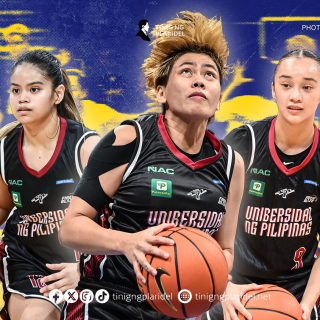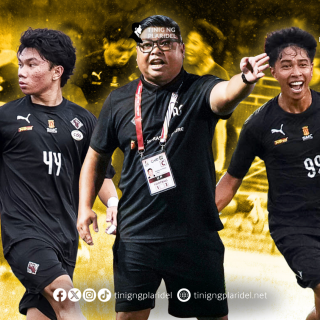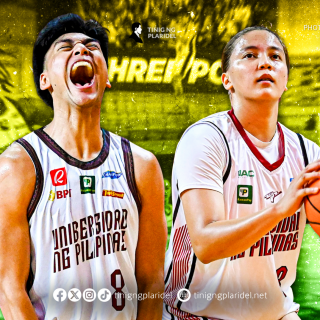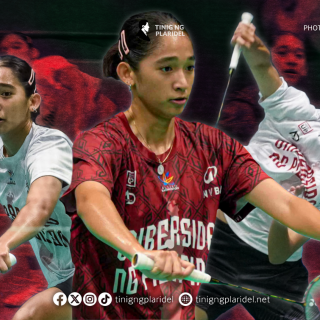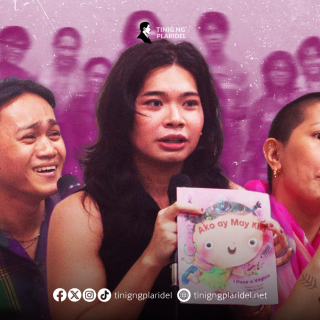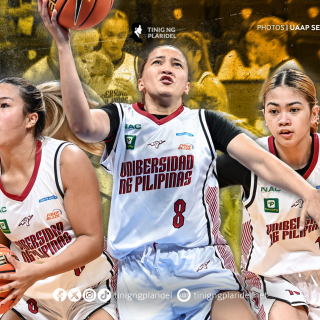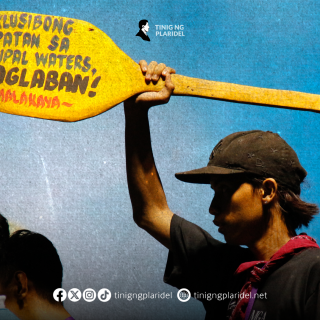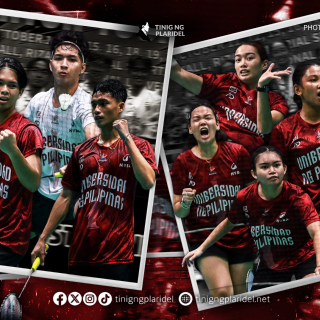Hidilyn Diaz’s golden moment in the Tokyo 2020 Olympic Games made aspiring Olympian and UP student-athlete Carlo tear up.
Carlo, who asked to withhold his identity, saw himself in Hidilyn’s burdensome quest through the years. From lifting cement-filled milk cans in her backyard in Zamboanga City to hundred-kilo barbells in Japan, it has been an awry journey for the gold medalist.
Before climbing the peak of the podium, Hidilyn was caught in a series of unfortunate events. From her malicious involvement in an alleged ouster plot in 2019, rejected pleas for sponsorships and lockdown restrictions that forced her confinement in Malaysia for over a year, Hidilyn’s road to Olympic gold was far from ideal.
Read: EDITORIAL: Athletes are more than their weight in gold
While Carlo was inspired to witness Hidilyn excel, he believes her story is a renewed call for support for budding athletes like him.
If such a distressing pursuit can make its way to the journey of a now-esteemed Olympian, one can only imagine how jaded homegrown athletes are to witness the systemic lapses of Philippine sports unfold right before their eyes.
Nowhere to train
At the core of every athlete’s journey lies countless hours of vigorous preparation. Unfortunately, access to adequate training facilities stands only to a few. UP athletes, for instance, have long carried the burden of training deficiencies.
Then-UP Softball Varsity Team Captain Catherine de Luna bared that her team secured open venues from their own pockets, including transportation and reservation fees.
“We are training everywhere we could… We would go to Marikina, Pasig, Rizal to train, but transportation and reservation of venues are kind of pricey,” she told TNP in 2019.
As the COVID-19 pandemic makes facilities all the more unavailable, student-athletes like the UP Varsity Swim Team (UPVST) have resorted to land-based exercises to train even at their homes.
READ: Nowhere to Go: UP athletes lament lack of facilities, dorm slots
Athletes should not have to endure sustenance issues on their own, knowing how these matters should be accounted for by university athletic institutions. Fractioning a scarce amount of resources just for somewhere to train is a gratuitous task for those who already bolster so much on their backs.
Not enough funds
National sports associations (NSAs), responsible for the development of athletes, coaches and other key personnel for national teams, look up to the Philippine Sports Commission (PSC) for financial support.
Previous PSC commissioner Jose Luis Gomez, portrayed the commission as a “funding agency for elite athletes with very little funds allocated to youth, sports or the grassroots.”
Six years later, incumbent PSC chairman William Ramirez tightened the commission’s belt and handed over the responsibility of providing pin money to athletes down to the country’s autonomous and significantly smaller-scale NSAs, deluded they could “raise their own funds in case the government falls short of the budget.”
And how did the PSC think NSAs could do it? By seeking private sponsorships — the same thing Hidilyn did two years ago to fund her Olympic dream but to no avail.
How can NSAs carry out their grassroots development projects if the PSC is pinching its purse on athletic provisions? Merely inculcating a culture of resourcefulness is a band-aid solution and nothing more.
Because of this, grassroot-level athletes are not provided even the bare minimum support once assured by state-controlled PSC in 2020.
One who can strongly attest to this concession is Coach Gregorio Colonia, one of Hidilyn’s first weightlifting mentors. He revealed that his trainees shared every piece of their scarce equipment — from shoes and suits to makeshift low-cost weights.
When the Duterte administration makes a rare admission of guilt on meager athletic budget allocations, it shows that the sought-after progress of Philippine sports has always been hampered by structural inefficiencies.
Among those who succumbed to such negligence are varsity teams from the University of the East — some of which have now been dissolved by their university administration due to insufficient scholarship funds.
This precedent may head the trail for other colleges and universities to follow suit in implementing athletic cost-cutting measures. Pandemic-induced financial setbacks lead educational institutions to reduce the budget for their athletic programs or pull the plug altogether.
UP’s response to address student-athletes’ urgent needs has been persistently inadequate, former UP Diliman University Student Council Sports, Fitness and Health Committee Head Enzo Espinosa told TNP in a 2019 story.
For UP Men’s Volleyball Team Captain Ruskin Ijiran, ensuring financial stability for his fellow student-athletes proves to be an uphill battle, forcing them to raise urgent calls for material needs and financial aid.
“The team faces a lot of challenges as this pandemic continues to grow. A lot of them suffer financially and mentally as they face the new normal […] some of them choose to work to provide for their family,” he said.
READ: Lack of remote learning resources haunts UP athletes
On paper, a wide array of accommodations and assistance is in the bag for the young athletes. But to still see a barrage of unheeded calls for help can only make one wonder if the mandate is lip service — nothing but a weightless codification of empty promises.
Battered and bruised
At the onset of the COVID-19 pandemic, the sporting world was badly hit by a brutal wave of tournament cancellations, leaving athletes’ careers at a standstill.
Sadly, some dreams may never be realized because of the health crisis. If a pandemic hasn’t already thwarted opportunities for the next generation of national athletes, systemic underfunding and dearth support just might.
UPVST captain Villamil echoed the plight of keeping the sanity of athletes in check as they face the horrors of an uncertain future.
“I just wanted to keep training and trying to balance my academics pero I got to a point na na-burn out na ako kasi I wasn’t used to the training that I was doing. Tapos training alone without the coach, you have to motivate yourself which is really hard,” said Villamil.
READ: From home court to home-based: What are Maroon athletes up to now?
Every athlete thrives for at least one shot to compete in the biggest sports stages, but fate does not favor everyone. Once deprived of chances and resources to succeed, the untapped potential of our future champions is left out to dry.
If the government continues to treat athletes as mere liabilities, their prospective careers will crash and burn to a point of no return. What our homegrown sporting heroes need is steadfast leadership with a concrete mission of building a competitive and adequately supported future.
Moving forward, we now close the chapter of Hidilyn’s triumph with hopes of fulfilling greater ambitions. Securing the gold medal was no easy feat, but to lift hundreds of kilos of weight in the Olympics is light work compared to the systemic changes needed to instill an athlete-centric culture in Philippine sports.
The last thing our country needs to realize its golden aspirations is another heavily burdened Filipino athlete only recognized in moments of glory. Hidilyn’s success is one that any Filipino athlete seeks to achieve one day, but the arduous path to get there leaves much to be desired.
“I believe Philippine sports has a bright future,” said Carlo, after watching Hidilyn win the Olympic gold medal. “It’s time to give full support to the athletes.”


